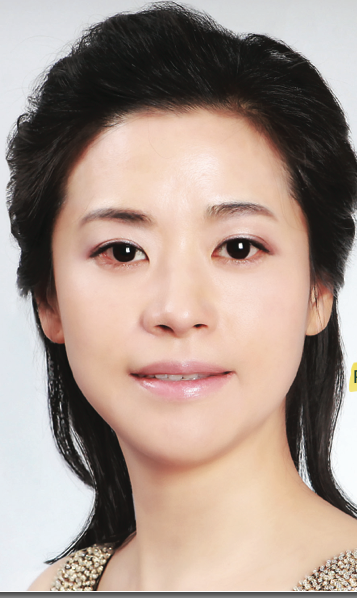Miryong Cha, Pianist in Review
Miryong Cha, piano
Weill Recital Hall at Carnegie Hall, New York, NY
June 23, 2015
In the highly competitive field of classical music, it is a significant achievement to earn one’s major degrees in piano at a prominent conservatory such as the Manhattan School of Music and to top things off with a Doctor of Musical Arts degree from an established school such as Rutgers. These credentials, plus some awards, concerts, and two teaching posts in Korea, were listed in the program biography of Miryong Cha, who performed last week in her New York Recital Debut.
One might assume that any young performer having studied with some highly respected teachers and passing such hurdles, has probably had his or her devotion to music tested thoroughly – the faint of heart do not easily pass jury exams and test recitals (let alone competitions) without determination and love of the craft. Actual concerts, presumably with unfettered choices of repertoire, are expected to be somewhat easier. It is thus perplexing to witness a recital that feels as much like a trial as did that of Ms. Cha. One wonders whether she was perhaps not feeling well – and the ten-minute wait for her to appear onstage at the beginning seemed to suggest as much. In any case, for unknown reasons, her demeanor and playing projected such a combination of resignation and doom that this listener felt like an unwelcome spectator at a punishment, a tricoteuse by the guillotine.
A work where the gallows bleakness is appropriate is “Le Gibet” the central movement from Ravel’s Gaspard de la Nuit, and indeed this was fittingly dark in Ms. Cha’s hands – but there were also numerous points in the program where one’s spirit could have soared with the music and it wasn’t happening. The rest of the Ravel set contained some of Ms. Cha’s better playing of the evening, particularly in “Ondine,” though still Ms. Cha favored the “doldrums” aspect of the ocean sounds, tempering all high points. “Scarbo” was unusually slow and lacking in its usual nightmarish intensity.
Despite the fact that Ms. Cha’s biography lists a recent lecture in Korea on the “Stylistic Analysis of Chopin’s 24 Preludes” she seemed skittish about the Chopin. Perhaps when one writes in depth about a work, one can psyche oneself out a bit, though ideally an analysis should deepen one’s interpretations.
The C Major Prelude (marked “Agitato”) was surprisingly slow and cautious (what one might call “practice tempo”), but it still had more than the typical number of errors, particularly in the left hand. No one is perfect, and the best pianists have errors in live performance, but sufficient awareness of the harmony should prevent an excess of these. At first, one chalked things up to nerves, but there developed a growing sense that all had not been prepared with sufficient loving care. Frequent mishaps beset the Preludes in D Major, F-sharp minor, G-sharp minor (which did however have a strong ending), and others. The ferocious B-flat minor Prelude was not quite mastered but was “prettified” with receding climaxes. By contrast, several of the slower Preludes were played disconcertingly briskly, including the A Minor (“Lento”) and the B minor (“Lento Assai”), the latter of which had been chosen for Chopin’s own funeral. There may have been some theory at play that the slow ones need to be played faster and the faster ones, more slowly – one doesn’t know – but if so, the case needed to be made convincing to the listener.
A layman could overlook the misfires in less famous Preludes, but it is hard to conceal harmonic lapses in a work as well known as the E minor Prelude. Many amateurs and students have played this one – along with the A major, B minor and C minor – so finesse is especially important. The A major seemed disturbingly fast, bordering on flippancy, and with some note slips as well. The D-flat Prelude flew by without any projection of the suspensions, so the resolutions felt superfluous as a result.
Some of Ms. Cha’s playing stood out as more successful, such as the F major Prelude, the E major, which enjoyed a deeply resonant bass, and the G major, which showed a solid (if slightly overpowering) left hand. The famously difficult E-flat Prelude was also in the beginning surprisingly clean compared to the others, though some exposed peak notes were missed. Perhaps with time, the entire set will ripen. Again, it is possible that for much of the recital Ms. Cha was in some kind of discomfort, because she seemed to be moving her right shoulder in random gyrations that bore no relation to the music or physical act of playing.
In addition to Chopin and Ravel, Ms. Cha included the lesser-known Fantasy in C minor, K.396, based on two pages of an unfinished Violin Sonata by Mozart, but actually finished as a piano piece by Maximilian Stadler (1748-1833). It was listed as Mozart (as it often has been), but I feel Stadler’s name needs to be there as well. Widely thought to have been an attempt to sell Mozart’s musical scraps as a meal, it is a roughly nine-minute pastiche sounding like C.P.E. Bach thrown into a blender with Mozart, Beethoven, and a dash of Czerny. This hybrid work has attracted many fine pianists including Sofronitzky, Gieseking, Brendel, Kraus, and others, though it takes imagination and power of persuasion to pull it off. It made an interesting addition as a listener sorted out which parts sounded truly Mozartean and which did not, but it never quite rose above the level of that mental exercise.
I do hope to hear Ms. Cha again, hopefully on an evening that reflects better her fine credentials.

